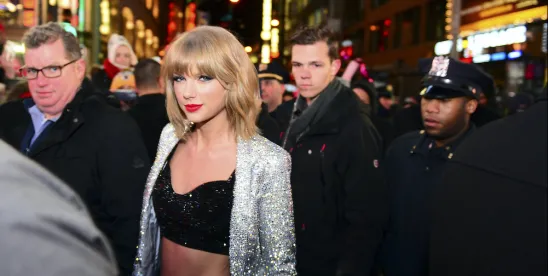On September 10, minutes after the first presidential debate between Donald Trump and Vice President Kamala Harris, an Instagram post set the political world abuzz: Taylor Swift endorsed Harris in the race. The announcement from one of the world’s biggest stars was newsworthy in itself, but IP lawyers likely took note of why she chose to post. Swift explained that she felt compelled to share her views after a photo featuring an AI-generated image of her appearing to endorse Donald Trump was posted online. The image was shared by Trump himself on his social media platform Truth Social, and was circulated widely by his supporters. Swift wrote that the image “really conjured up my fears around AI, and the dangers of spreading misinformation.”
Swift isn’t alone in her concerns. Hyper-realistic digital replicas of individuals or their voices, sometimes known as “deepfakes,” have become so prevalent that Congress may step in to regulate them. A bill known as the Nurture Originals, Foster Art, and Keep Entertainment Safe (NO FAKES) Act was recently proposed to directly address the issue of AI-generated images, videos, and sounds meant to impersonate individuals without their authorization. The bipartisan Act was introduced in the Senate on July 31, and a companion bill was introduced in the House on September 12. While it remains to be seen if it will actually become law, its introduction has sparked meaningful conversation about the importance of a nationwide solution to this problem.
While the NO FAKES Act is primarily a response to the relatively new issue of AI-generated content, it represents a significant step in resolving a long-standing issue: the lack of a uniform federal right of publicity. The right of publicity is the exclusive right of an individual to control the use of their name, image and likeness for commercial purposes. Currently, this right only exists at the state level, and protections vary significantly from state to state. Depending on the jurisdiction, the right may or may not survive an individual’s death, may protect only certain elements of a person’s identity or likeness, and may differ depending on the individual’s specific characteristics. In some states, the right has not been recognized at all.
While several states have passed laws aiming to protect publicity rights from AI-generated content specifically, they tend not to be as comprehensive as the proposed federal legislation. For example, California recently enacted three new laws requiring digital watermarking of AI-generated content, criminalizing creation and distribution of sexually explicit deepfake content, and mandating creation of mechanisms for reporting such content on social media. These are important developments in the law, but are less far-reaching than the proposed federal legislation, which would ban the production and distribution of virtually all unauthorized deepfakes.
The NO FAKES Act would establish a national right of publicity for all individuals, regardless of the commercial value of their identifies, both before and after death – at least with respect to any “newly-created, computer-generated, highly realistic electronic representation that is readily identifiable as the voice or visual likeness of an individual[.]” It would make such rights unassignable during the lifetime of an individual, and regulates how they may be used and assigned after death. It establishes civil penalties for violations, and includes other elements meant to harmonize the current patchwork of state laws.
However, the legislation as currently drafted contains significant exceptions. First, it exempts from preemption any state law regulating digital replicas in place before January 2, 2025, meaning that variations among jurisdictions will not be completely eliminated. It additionally keeps in effect any state laws regulating sexually explicit or election-related deepfakes, regardless of when they were passed. It also contains broad fair use carve-outs to exempt First Amendment-protected uses such as “a bona fide news, public affairs, or sports broadcast or account, provided that the digital replica is the subject of, or is materially relevant to, the subject of such broadcast or account,” and allows uses of replicas that are “fleeting or negligible.” These exceptions could raise challenging questions about when it’s permissible to use digital replicas, and how their regulation should be balanced with free speech rights. Courts would be left to interpret some of their more vague aspects, such as when the use of a deepfake is sufficiently “fleeting” to be protected.
Attorneys representing users of generative AI or individuals with commercially valuable identities should familiarize themselves with their jurisdiction’s right of publicity laws, and keep a close watch on the progression of the NO FAKES Act. While creation of a national right of publicity would be a significant step in the regulation of AI, technology has often proven to outpace the law. As AI and related technologies develop, it is more important than ever to think creatively about how to use the law to prevent the misappropriation and falsehoods it can perpetuate.



 />i
/>i
